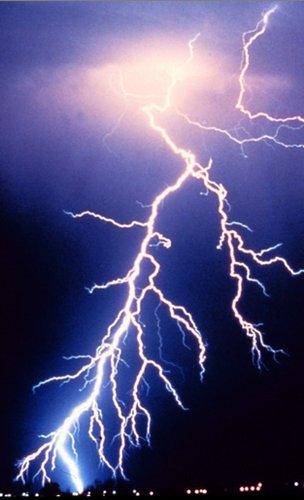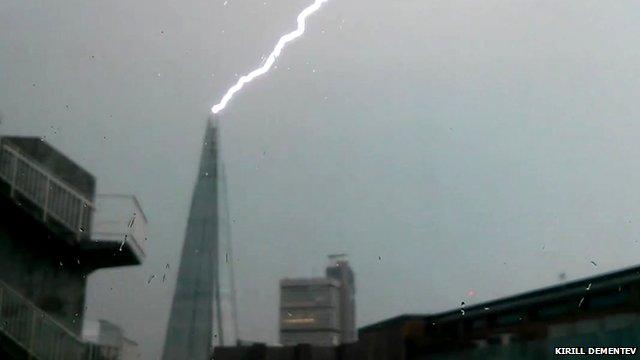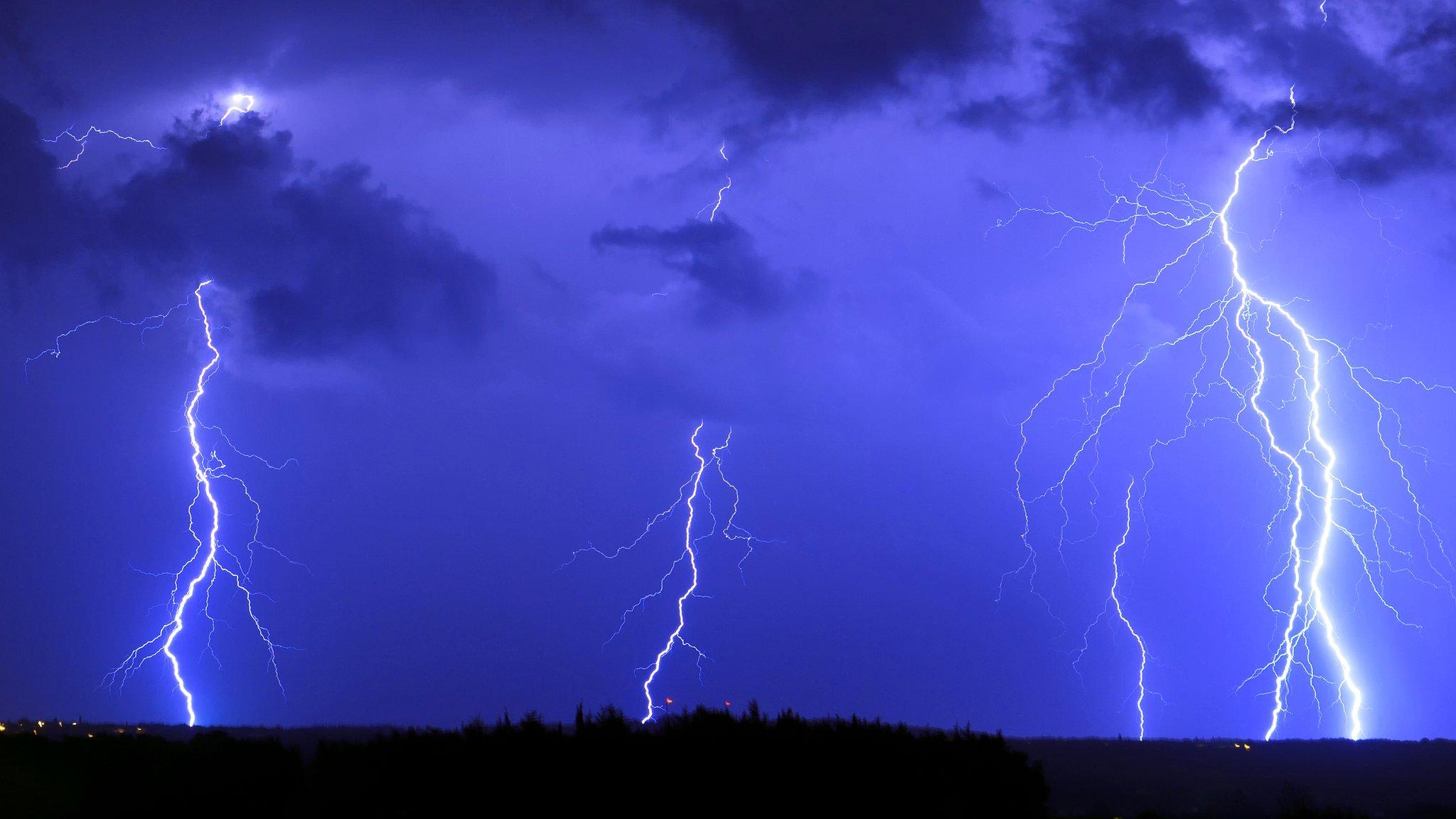Climate change 'will make lightning strike more'
- Published

Global warming will significantly increase the frequency of lightning strikes, according to US research.
The research, published in Science, external, was carried out with the help of data from a US network of lightning detectors.
The teams says they have calculated how much each extra degree in temperature will raise the frequency of lightning.
"For every two lightning strikes in 2000, there will be three lightning strikes in 2100," said David Romps, at the University of California, Berkeley.
As well as triggering more wild fires, he said, this would alter the chemistry of the atmosphere.
The team's work reveals a new method of working out the relationship between temperature and lightning storms, by estimating the heat energy available to "fuel" storm clouds.
"As the planet warms, there will be more of this fuel around, so when thunderstorms get triggered, they will be more energetic," said Prof Romps.
He and his colleagues calculated that every 1C rise in global temperature would lead to an increase in the frequency of lightning strikes by 12%.
Animated data from the national lightning detector network shows an entire year of lightning strikes
They validated their calculations against a year of data from the US National Lightning Detector Network, which detects an electromagnetic pulse every time lightning strikes in the US.
"The resulting data is exquisite," said Dr Romps. "The position and time of every lightning strike is very accurately recorded."
Changing the atmosphere
As well as triggering half of the wildfires in the US, each lightning strike - a powerful electrical discharge - sparks a chemical reaction that produces a "puff" of greenhouse gases called nitrogen oxides.
"Lightning is the dominant source of nitrogen oxides in the middle and upper troposphere," said Prof Romps.
And by controlling this gas, it indirectly regulates other greenhouse gases including ozone and methane.
Prof Romps said that this was an example of a large response to "what sounds like only a few degrees of warming".
A scientist at the UK Met Office, external said it was important to understand future lightning patterns, but cautioned that there were still uncertainties in the researchers' model that needed to be tested further.
The Met Office added that the application of this forecast to other parts of the world could be limited by the fact that rainfall patterns were very uncertain in many regions.
Prof Romps said that if the Earth did warm by the expected 4C during the 21st Century, the change in lightning would be "the least of our worries".
"A big chunk of the [carbon dioxide] we put into the atmosphere during this century will persist [there] for 100,000 years; a long-lived legacy, indeed."
- Published9 February 2014

- Published22 May 2014

- Published15 May 2014
